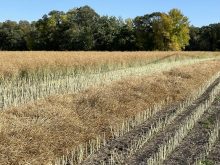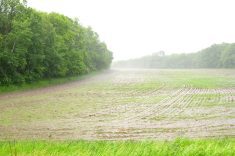Canadian grain and oilseed producers experienced a surge in major crop input expenses in 2022. At the same time, the market for grains and oilseeds was exceptionally volatile.
This dynamic was critical in determining farm incomes in 2022 and has much to say on what farmers need from agricultural policy.
To investigate this issue, the Canadian Agri-Food Policy Institute looked at data on expenses for fertilizer, seed and fuel for wheat and canola in Alberta, and for corn and soybeans in Ontario. Input prices in fall 2021 were compared with the spring of 2022, and Alberta and Ontario crop budgets were used to measure the price change per acre.
Read Also

Manitoba boosts stake in cereals centre to $23.5 million
Premier Wab Kinew said the additional project funds will help ‘Trump-proof’ the provincial economy.
The results showed that, between fall 2021 and spring 2022 total variable costs in Alberta increased just over $50 an acre. Directionally similar results were obtained for Ontario.
As costs were spiking, crop prices were also moving up. Relatively high forward crop prices could be locked in throughout the spring. These declined somewhat through the growing season, but by the fall harvest and immediately after, prices had strengthened again.
When crop prices and variable input expenses were integrated, it was evident that contribution margins per acre were up in 2022 versus baseline expectations the previous fall.
In other words, crop revenue increases more than carried the jump in variable expenses.
With these results and some space to reflect on 2022, the following is evident:
First, before getting to favourable returns, producers had to bear much higher crop expenses than expected when 2022 cropping decisions were made. Surely this stretched many producers’ credit lines and caused significant stress and worry.
Secondly, while the volatile year 2022 ultimately turned out well for producers, we should acknowledge that it could have turned out differently. For example, fertilizer and fuel prices were ramping up sharply before the Russian invasion of Ukraine. It jarred the crop commodity markets — especially wheat, and later the grain and oilseed complex — and generated the revenue base to offset increases in input costs. Without the commodity market shock from the war, producers could have been stuck with input price inflation without offsetting crop price changes.
Third, 2022 provided good yields, broadly speaking. In a year where producers carried exceptionally high crop expenses, a poor harvest could have been financially disastrous.
Strong crop producer returns in 2022 involved dodging several bullets. If the future involves the kind of volatility spawned by scarce energy, fears of food insecurity and geopolitical instability, we need to be better prepared with agricultural policy.
Finance and the much greater draws on working capital to finance crop production emerge as key points. Where the current suite of business risk management programs target low and unstable operating earnings, the emerging risk is that of much greater required levels of working capital and facilitating access to operating credit.
In this regard, important changes were made in 2022 to the Advanced Payments Program. This is timely and fit for purpose, but it is likely that more will be needed.
Governments also have an opportunity to buttress AgriInsurance and AgriStability with programs that address the gap scenario in which input costs increase, prices received by Canadian farmers fall and there is a yield shortfall.
This is consistent with ongoing concerns of industry regarding AgriStability, and the interest in some form of revenue or cost of production coverage under AgriInsurance, to work in tandem with a margin-based program.
We must assume that the situation that developed in 2022 is apt to occur again, and that next time it may not work out as well as it apparently has in 2022.















